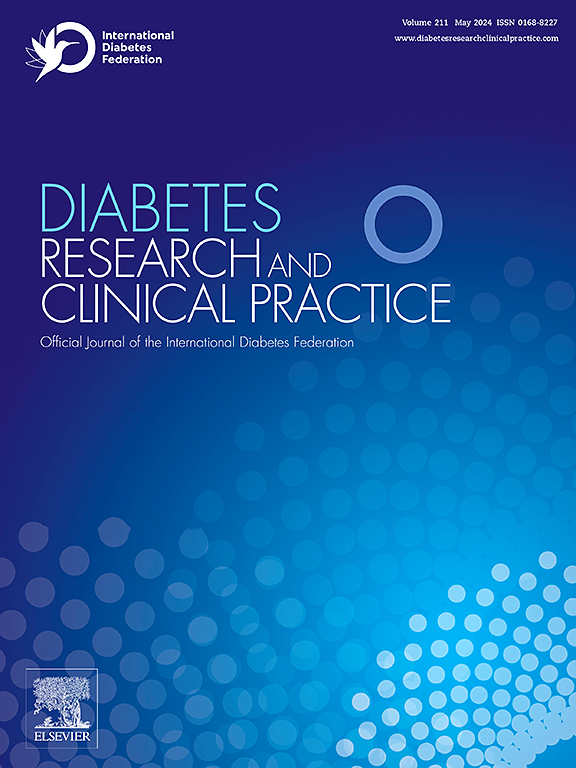独居糖尿病患者的全因和特定原因死亡风险:大规模人群队列研究。
IF 6.1
3区 医学
Q1 ENDOCRINOLOGY & METABOLISM
引用次数: 0
摘要
目的:独居家庭的增加是全球趋势。我们旨在利用大规模人口数据库调查独居糖尿病患者(IDLA)的死亡风险:方法:我们从韩国国家健康信息数据库中找到了 2,447,557 名 2 型糖尿病成人患者。一人家庭是根据登记的家庭成员数量定义的。采用多变量考克斯比例危险回归模型估算了全因和特定原因死亡的风险:中位随访期为 6.0 年,共有 191 084 人死亡(7.8%)。在调整了潜在的混杂因素后,与非独居者相比,IDLA的死亡风险更高(HR 1.20,95 % CI:1.18-1.22)。这种关联在年轻人、男性和低收入人群中更为突出,并且取决于独居时间的长短。与非IDLA组相比,IDLA组的特定病因死亡风险都明显较高。坚持良好的生活方式与全因死亡率的显著降低有关,尤其是在IDLA人群中:结论:IDLA 患者的死亡风险较高,这凸显了对有针对性的医疗干预和社会援助的需求,尤其是对那些生活方式不健康或收入较低的人而言。本文章由计算机程序翻译,如有差异,请以英文原文为准。

All-cause and cause-specific mortality risks in individuals with diabetes living alone: A large-scale population-based cohort study
Aims
The rise in one-person households is a global trend. We aimed to investigate mortality risk in individuals with diabetes living alone (IDLA) using a large-scale population-based database.
Methods
A total of 2,447,557 adults with type 2 diabetes were identified from the Korean National Health Information Database. One-person households were defined based on the number of registered family members. The risks of all-cause and cause-specific mortalities were estimated using a multivariable Cox proportional hazards regression model.
Results
During a median follow-up period of 6.0 years, 191,084 deaths (7.8 %) occurred. IDLA had a higher risk of mortality compared to those not living alone after adjusting for potential confounders (HR 1.20, 95 % CI: 1.18–1.22). This association was more prominent in younger individuals, men, and those with low income, and it was dependent on the duration of living alone. The risks of cause-specific mortality were all significantly higher in the IDLA group compared with the non-IDLA group. Adherence to favorable lifestyle behaviors was associated with a significant reduction in all-cause mortality, particularly in IDLA.
Conclusions
The elevated risk of mortality in IDLA highlights the need for tailored medical interventions and social assistance, particularly for those with unhealthy lifestyles or low income.
求助全文
通过发布文献求助,成功后即可免费获取论文全文。
去求助
来源期刊

Diabetes research and clinical practice
医学-内分泌学与代谢
CiteScore
10.30
自引率
3.90%
发文量
862
审稿时长
32 days
期刊介绍:
Diabetes Research and Clinical Practice is an international journal for health-care providers and clinically oriented researchers that publishes high-quality original research articles and expert reviews in diabetes and related areas. The role of the journal is to provide a venue for dissemination of knowledge and discussion of topics related to diabetes clinical research and patient care. Topics of focus include translational science, genetics, immunology, nutrition, psychosocial research, epidemiology, prevention, socio-economic research, complications, new treatments, technologies and therapy.
 求助内容:
求助内容: 应助结果提醒方式:
应助结果提醒方式:


